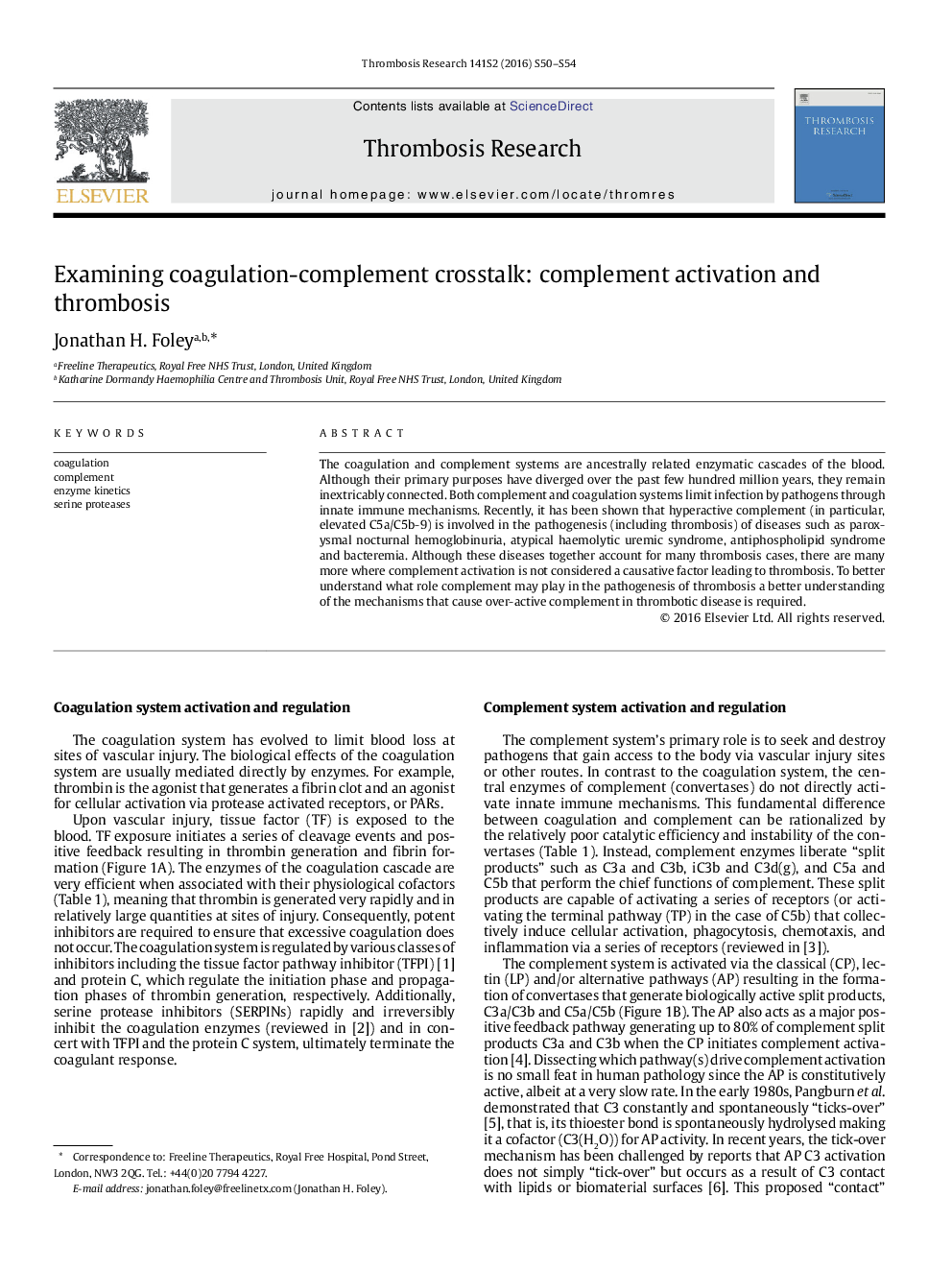| Article ID | Journal | Published Year | Pages | File Type |
|---|---|---|---|---|
| 3026805 | Thrombosis Research | 2016 | 5 Pages |
The coagulation and complement systems are ancestrally related enzymatic cascades of the blood. Although their primary purposes have diverged over the past few hundred million years, they remain inextricably connected. Both complement and coagulation systems limit infection by pathogens through innate immune mechanisms. Recently, it has been shown that hyperactive complement (in particular, elevated C5a/C5b-9) is involved in the pathogenesis (including thrombosis) of diseases such as paroxysmal nocturnal hemoglobinuria, atypical haemolytic uremic syndrome, antiphospholipid syndrome and bacteremia. Although these diseases together account for many thrombosis cases, there are many more where complement activation is not considered a causative factor leading to thrombosis. To better understand what role complement may play in the pathogenesis of thrombosis a better understanding of the mechanisms that cause over-active complement in thrombotic disease is required.
